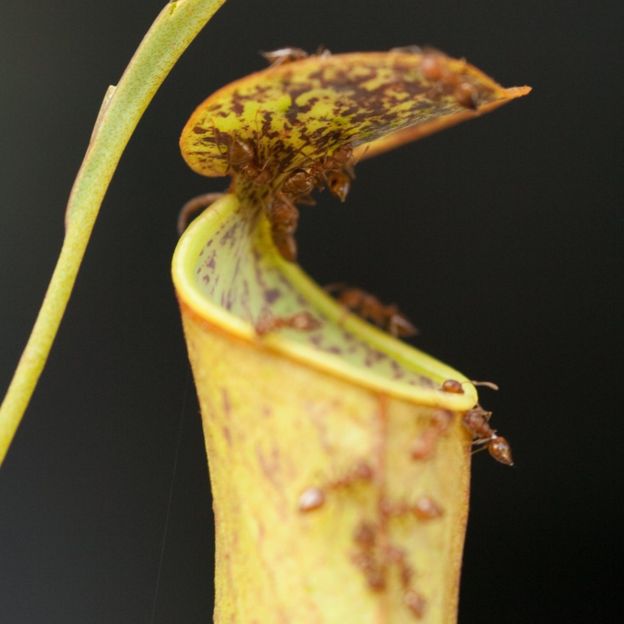A carnivorous pitcher plant uses power from falling raindrops to fling ants to their doom, biologists have discovered.
The team, from the University of Bristol, found that raindrops kick off very fast vibrations in the lid of the plant's jug-shaped leaves.
This propels ants from the lid into the pitcher trap below, where they drown and are consumed by digestive juices.
The findings, published in the journal PNAS, are based on high-speed cameras and laser vibration measurements.
Using these instruments, Dr Ulrike Bauer and her colleagues recorded extremely fast movement in the lid of the pitcher leaf, after it was hit by a raindrop.
It wobbles like a stiff spring, she said.
"You have a raindrop hitting the surface and that causes it to move down, fast. Then because of this spring property, it moves to a certain point and springs back.
"You get an oscillation, very similar to when you put a ruler on the edge of your desk and flick the end down with your finger."
New moves
This movement is unique in the plant kingdom, Dr Bauer said - partly because of its speed, which easily outstrips the insect-trapping manoeuvres of other carnivorous plants, and partly because of the way it exploits an external energy source.
"Having a fast movement in a plant is unusual in itself," she explained, "but having a fast movement that doesn't require the plant to invest any energy - it just requires it to build the structure - that's something quite surprising."
The findings place the species in the study, Nepenthes gracilis, into its own carnivorous category; it belongs neither with "active" carnivorous plants, like flytraps, nor motionless "passive" insect eaters - like most other pitcher plants.
Key to the pitcher's rain-powered trap is the stiffness of its lid. When the team studied another species, which catches ants using only the slippery rim of its pitcher, they found it had a more bendy lid.








0 komentar:
Posting Komentar